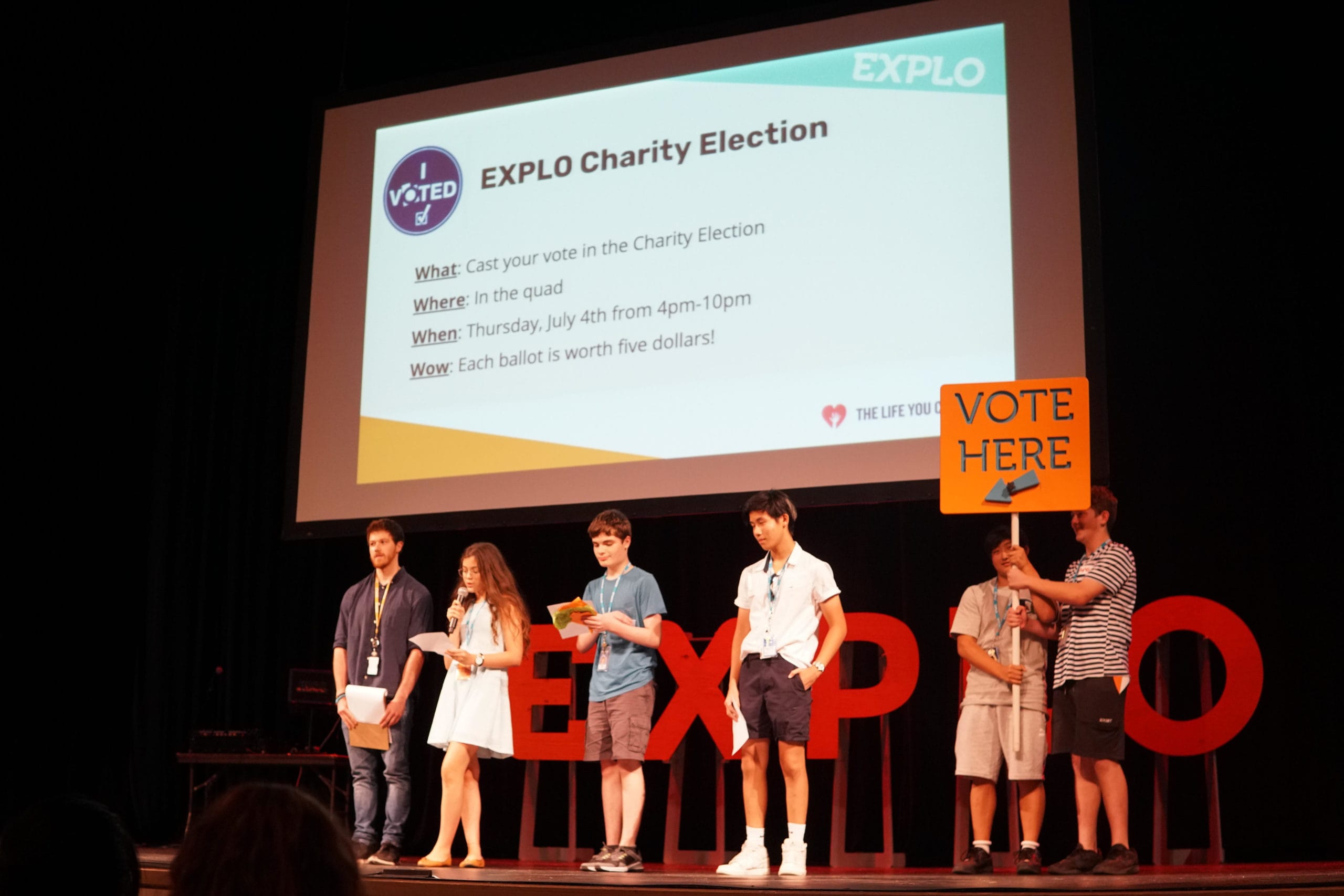This two-part blog series explores the challenges of fundraising and strategies for overcoming them. In the first part, I talked about "troubleshooting" my fundraising efforts, while this second post outlines the strategies that worked for me.
I recently had the idea to fundraise with a "Coffee Challenge" amongst my friends and family for a small Cambodian charity called Hearts to Harmony1. My efforts were off to a slow start, so in addition to troubleshooting my approach on my own, as described in my previous post, I also thought it was probably a good idea to ask other people for advice – people who had more experience than I did.
I started by shooting off a message to two friends who had done a 100km walk for charity. I also threw the issue out to my fellow The Life You Can Save bloggers to see if they had any advice; one of them, Claire, actually used to run a nonprofit and was able to give me great advice based on her fundraising experience.
No matter whom I asked, they all agreed that fundraising is hard – and that it takes a lot of practice, trial and error. As their suggestions, experiences and ideas came in, a range of strategies emerged:
Strategy #1: Use a direct approach
Claire told me that a direct ask – face-to-face over the phone or through a targeted email – usually has the best outcome. This confirmed my thoughts about whether people didn't feel my fundraiser was directed at them personally because Facebook is simply too general a forum.
Claire also suggested that Facebook usually works better as a reminder after you've asked people directly, with the added benefit that it's also an opportunity to spread the message to others.
An option would be to tag people directly in a post or to write the request on their wall; however, I personally don't like it when people do that to me, so I didn't want to do it to my friends either. But if you're comfortable with requests posted to you directly, that's also a good strategy.
To see if a direct approach worked better, I group-emailed a number of friends and family who aren't on Facebook, and sure enough, while not everyone immediately said they'd give something, the reply rate was much higher than on Facebook. It probably also helped that I'd included my mum in my group email, who was more than happy to help out!
To recap: A direct, personal approach works much better than a general, relatively anonymous ask on Facebook.
Strategy #2: Repetition works
One of my friends who had walked for charity told me I'd essentially have to be in people's faces about my cause. The other added that regular updates made it more likely that I would catch people at a time when they were feeling generous. It would also help to keep my fundraiser on people's minds.
In addition, as my fellow blogger Brad suggested, it's very easy to ignore or miss Facebook posts, so my fundraiser probably slipped by under a lot of people's radars. We all know how fast our newsfeeds move, and unless you're an obsessive tabber like I am (meaning that you'll open any link or post that seems interesting in a new browser tab to save it for later), you'd have trouble finding the original post again even a few hours later, let alone a day or two – even if you really, really wanted to.
As it turned out, there were indeed a few people who had immediately liked my idea but hadn't commented on my original post and therefore lost track of it, so my repeated posts helped get them officially on board.
To recap: Don't assume that everyone had the time to read your initial post or email properly – people lead busy lives, and while you definitely don't want to spam them, a brief reminder is often welcome or may even be the first time people hear about what you're doing!
Strategy #3: Create a community feeling
Another fellow blogger, Angie, who is a psychologist, told me that there's good evidence that fundraising in a community, such as at work or at church, makes people feel like they're working towards a contribution together, making the effort not only fun but also a positive bonding experience. However, I'm a freelancer working by myself, so I don't have any colleagues as such, and I don't go to church.
In addition, even if I did have colleagues or fellow churchgoers, I always feel that rousing up a community group takes a lot of time and energy that I'd rather spend elsewhere – it's not really an approach that suits me well personally. Having said that, this is obviously an individual thing, so if you're active in a community and keen to have a go, this is definitely a tried and tested way of raising funds while having fun and building a community!
Because it seemed like a good strategy, I thought about other ways of creating a community feeling and tried to emulate it by mentioning in my posts that others had already signed up for the challenge and were participating, hoping people would get caught up in that "wave". This seemed to work well, giving people a sense that something was happening and moving forward, and that they weren't the only ones to contribute.
To recap: Coming together as a community, be it in the workplace, at church or another community group, can be a fun and very successful way of raising funds together.
Strategy #4: Make it about the individual

Photo credit: Hearts to Harmony
Angie also suggested targeting the fundraising to a particular, identifiable person rather than a general cause. We humans seem to be hardwired to feel more encouraged to help someone if we feel we're helping one particular individual whose plight we understand, rather than a larger number of people about whom we know nothing personal at all.
So I picked one particular example from the Hearts to Harmony Facebook page, of a woman who had lost her husband and was trying to feed her family by washing dishes for weddings for about 20-40 dollars per month. This woman had just been accepted into the Hearts to Harmony rice donation programme.
I shared Heart to Harmony's post about this woman together with my coffee challenge to give people the face of a person they would be helping by participating. While I don't know whether this particular post inspired anyone to contribute, one friend asked whether I was "referring to your Facebook post about the poor woman" – demonstrating that while he may not have remembered the details of my coffee challenge, he did remember her story.
To recap: Provide a face for your potential donors, an individual they're going to help, so they don't feel like their money just disappears down an anonymous rabbit hole.
Strategy #5: Let people know they're making a difference
As soon as people started to sign up, I included some information about their efforts in my repeat posts on Facebook, letting others know that people were participating and how much money they had already donated. I also kept reminding people that I was matching their donations, thus increasing their impact.
This served to remind people that together, we were making a difference, that others were chipping in already, that it was a worthy cause to contribute to and that with matched donations, the amount could actually grow quite quickly.
It also helped that Hearts to Harmony has a "wish list" on their website that tells people what they need most and how much it costs – my mother, for example, checked it to see what her money could buy before deciding to donate the amount needed to buy a bicycle for a family.
To recap: Show people that others are chipping in as well, and that together – and with donation matching, if you're doing that – you're making a difference! Concrete examples of what people's money will buy for those in need also encourages people to contribute.
Success
Employing all those strategies – a direct approach, repeating posts, creating a "community", making it about an individual and letting people know they were making a difference in a string of successive posts on Facebook really started to work for me: People knew what I was trying to do and began chipping in.
My contributors gave very different amounts, from small to large contributions, some without participating in the challenge, others actually counting their coffee money for a week. One friend made my idea into a real challenge for herself by deciding to donate the money *instead* of having coffee – headaches included! While hers wasn't the largest donation, her effort was definitely the one I admired most!
The strategy that worked best was my email approach. Even though it was only a group email and didn't go out to a large number of people, this netted me the greatest amount of donations.
In the end, we raised a total of 657 AUD for Hearts to Harmony!
So while fundraising can be tough and takes a bit of effort, it's amazing to see how many people will contribute to a worthy cause and how your efforts pay off!
What are your best fundraising experiences? Have you tried different strategies and which ones did you think were the most fun and the most successful?
1 Please note that Hearts to Harmony isn't one of the charities recommended by The Life You Can Save, so if you are considering making a donation to them, do your own research on how your donation will be used.







